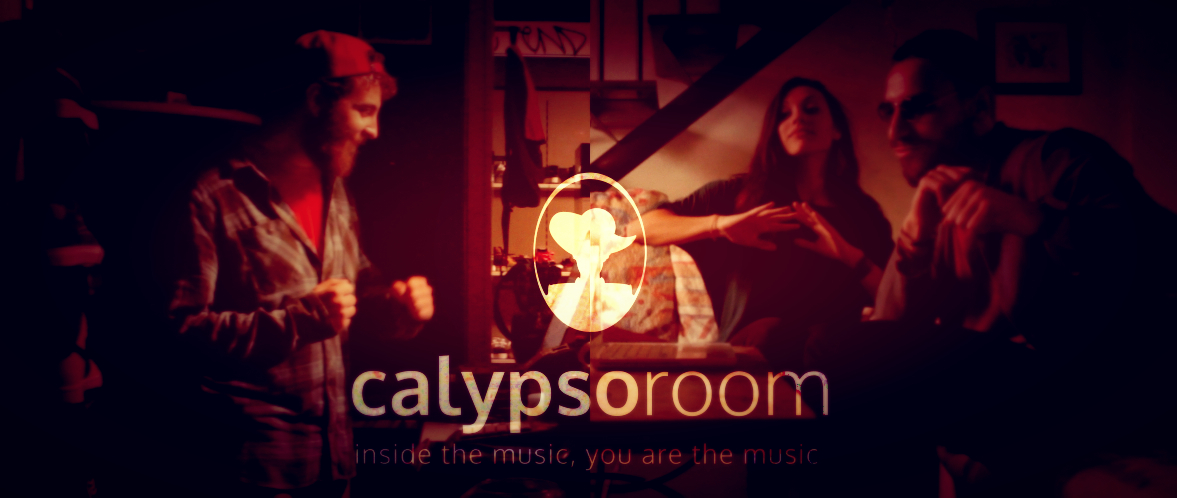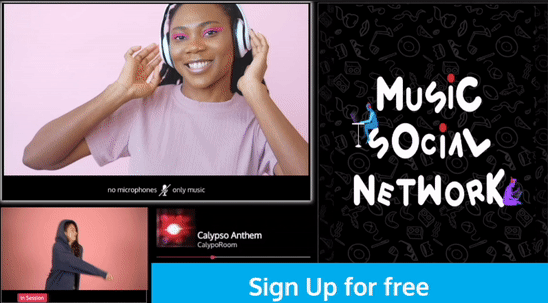Analyzing the monetization models of music social networks

Table of content
Analyzing the monetization models of music social networks - Introduction
Have you ever wondered how your favorite musicians make money when you stream their songs on your favorite social media platforms?
It's a fascinating world behind the music we enjoy every day, a world shaped by technology and ever-evolving business models.
In this age of digital innovation, music social networks have taken center stage, transforming the way we listen, share, and monetize music.
The role of music social networks is critical in today's digital society. They aren't just platforms where we listen to music - they've become virtual stages where musicians showcase their talents, interact with fans, and most importantly, earn a living.
In this piece, we'll peel back the curtain and delve deep into the monetization models of music social networks. We'll explore how artists get paid, how these platforms benefit from the music they host, and how all of this impacts you, the listener.
You'll discover new insights into platforms like CalypsoRoom, which stands out with its unique pay-per-play model, where artists earn each time their music is played in a video music session.
So whether you're an independent artist navigating the digital landscape, a music lover interested in the business behind your favorite tracks, or an industry enthusiast eager to understand the future of music monetization, this article promises a rewarding journey.

KEY TAKEAWAYS
Evolution of Music Monetization: The music industry has seen significant evolution, transitioning from an era where physical sales were key to an era of digital consumption via downloads and streaming. The digital leap, facilitated by the advent of the internet, allowed musicians to reach global audiences through digital platforms with an estimated 116.27 million streaming users in the U.S. alone in 2022.
Social Aspect of Music Consumption: Digital music platforms are not just repositories for music but are also social networking platforms, tapping into music's social aspect. These platforms have revolutionized music consumption, fostering interconnected listening habits influenced by peers and global users, with over 616.2 million people now using online streaming platforms.
Music Social Networks' Accessibility and Inclusivity: Music social networks have made music discovery and sharing accessible and inclusive to all, regardless of their location or identity. They give everyone a chance to contribute to the music community they host, catering to diverse musical tastes and preferences, and their popularity can vary depending on regional preferences.
Monetization Models in Music Social Networks: Music social networks employ various monetization strategies, including advertisement revenues, subscription fees, and direct purchases. These models each have pros and cons concerning user experience, accessibility, and revenue for artists, necessitating the need to find a balance that satisfies both users and artists.
Introduction of CalypsoRoom: CalypsoRoom is a unique music social network that allows users to share music experiences in real-time, connecting through webcams. It merges the joy of shared music experiences, like live concerts or music festivals, with the convenience of online streaming, potentially marking a turning point in the evolution of music social networks.
CalypsoRoom's Unique Monetization - Pay-per-Play Model: CalypsoRoom has introduced a transformative pay-per-play model where artists get paid each time their song is played during a video music session. This model ensures fair compensation for all artists, including emerging or independent ones, and allows listeners to directly support their favorite artists simply by playing their music.
The evolution of music monetization
Looking back at the history of music, the road has been one of innovation and transformation. The ways musicians earn from their craft have significantly evolved over time, from record sales to the brave new world of digital platforms.

Album sales were not just about the revenue but were also a key metric to gauge an artist's popularity. This period was a golden era for musicians and record labels alike. But like all good things, this era too had to evolve.
With the advent of the internet, a paradigm shift occurred. The landscape of music sales transformed as music took a digital leap.
In the United States alone, it is estimated that there have been 116.27 million streaming users in 2022, and 47.16 million people who use downloads to access digital music.
As a result of this digital evolution, streaming platforms have risen to prominence, becoming the preferred method for most of us to enjoy our favorite tracks.
These platforms don't just offer a library of millions of songs at our fingertips but also provide a platform for artists to reach a global audience.

But it's not just the ease of access or the vast music library that makes these platforms so popular. It's the power of social networking they incorporate.
Music has always been a social experience, and digital platforms have tapped into this aspect, revolutionizing the way we consume music.
In recent years, the number of music streaming subscribers has increased rapidly, with over 616.2 million people now using online streaming platforms.
Our listening habits are no longer isolated; they're interconnected, influenced by our peers, and even by people across the globe we've never met.
As we continue to adapt to this digital world, one thing remains certain: music and the ways we monetize it will continue to evolve, reshaping the industry and our experiences within it.

An overview of music social networks
Just like a great song that brings people together, music social networks have found a special place in our digital world.
These platforms are where music meets social media, allowing us to discover new songs, follow our favorite artists, and even share our musical tastes with friends.
The beauty of music social networks lies in their accessibility and inclusivity. Whether you're a renowned artist or an aspiring musician, a hardcore fan or a casual listener, these platforms open up a world of music for everyone, irrespective of where you are or who you are.

While these platforms share a common goal of bringing music to the masses, their approaches can vary significantly. For instance, some focus on a specific genre, while others cater to a broad range of musical tastes.
This diversity is also reflected in their monetization models. Some music social networks rely on advertising revenue, others on subscription fees, while platforms like CalypsoRoom have introduced unique models like pay-per-play.
Depending on regional preferences, the popularity and usage of these platforms can vary. For instance, a platform that's popular in the U.S might not have the same level of engagement in Asia.
So, while you're enjoying your favorite tunes on these music social networks, remember that there's a fascinating world operating behind the scenes.
They're not just platforms for streaming music, they're thriving communities that are shaping the future of the music industry.

Analyzing the monetization models of music social networks
Monetization models are the lifeblood of music social networks. They're the engine that drives these platforms, ensuring they remain profitable while delivering the music we all love.
Let's take a moment to understand the various strategies for monetizing music on these networks, including advertisement revenues, subscription fees, and direct purchases.
One of the most common monetization strategies is through advertisement revenues. Many platforms provide free access to their music libraries, but they intersperse the user experience with targeted ads.
This model is particularly appealing to users who don't wish to pay for music streaming but don't mind occasional advertisements.

Another widely used model is the subscription fee. Some platforms charge users a monthly or annual fee for ad-free, premium access to their music library.
Spotify, for example, has 210 million premium subscribers worldwide who pay for ad-free access to the music library.
This model generally provides a superior listening experience and often includes additional benefits like offline listening and superior sound quality.
Direct purchases represent a more traditional model. Some music social networks offer users the ability to directly purchase songs or albums.
Each of these models has its pros and cons. Advertisement revenues allow platforms to offer free music to users, but they can disrupt the user experience and often provide lesser income to artists.
Subscription fees ensure a steady income stream and a better user experience, but they might exclude potential users who are unwilling or unable to pay.
Direct purchases offer higher revenue per sale for artists and permanent ownership for users, but they don't align with the trend towards streaming and might not appeal to users who prefer to access a broad music library rather than owning specific songs.

Remember, the best monetization model often depends on the specific user base, the nature of the platform, and the music it offers.
CalypsoRoom: a new dimension in music social networks
In the galaxy of music social networks, CalypsoRoom has emerged as a shining star.
Not just another platform for streaming music, CalypsoRoom offers something distinctly unique – a chance to share music experiences in real-time.
It's like having a virtual music party with your friends or with strangers who share your musical tastes, no matter where they are in the world.
Imagine this: you're in your room, headphones on, your favorite song playing. Now, what if you could share this moment with others? What if you could see their reactions, their smiles, their head-bops, and their dance moves, all in real-time?
That's what CalypsoRoom offers. It's a place where music lovers can listen to the same music together, connected by webcams.
It's an innovative concept that redefines the way we consume music. It taps into the essence of music as a shared experience, as something that connects us on a deep emotional level.
Unlike traditional platforms where music consumption is often a solitary act, CalypsoRoom introduces a communal dimension to it.
This platform has succeeded in merging the best of two worlds: the joy of shared music experiences, reminiscent of a live concert or a music festival, and the convenience of online streaming.
This fusion makes for an unforgettable musical journey, one that could mark a turning point in the evolution of music social networks.
So, next time you're about to listen to your favorite song, consider trying CalypsoRoom. You might discover not just a new way to enjoy music, but also a community of music lovers that will make your musical journey even more enriching.

Monetization in CalypsoRoom: pay-per-play model
In an industry that's continually evolving, CalypsoRoom has made a mark with its unique approach to monetization.
In this model, every time a song is played during a video music session, the artist gets paid. Simple, right? But this simplicity belies a transformative shift in how artists can earn from their music.
For artists, especially those who are emerging or independent, this model offers an avenue to receive fair compensation for their work.
Unlike traditional structures where revenues are often skewed towards mainstream acts, CalypsoRoom's pay-per-play model rewards artists for every play their music gets.

This ensures that even artists who may not have the same exposure as mainstream acts have an opportunity to earn from their music.
For listeners, this model allows them to directly support their favorite artists by simply doing what they love - listening to music.
Every song they play on CalypsoRoom contributes to the earnings of the artist. It's a simple and effective way of supporting the music community, particularly those artists who may not receive the recognition they deserve on larger platforms.
So, whether you're an artist looking for fair compensation or a listener wanting to support directly your favorite musicians, CalypsoRoom's pay-per-play model presents an opportunity to change the music landscape, one play at a time.
CalypsoRoom isn't just revolutionizing the way we listen to music; it's also reshaping the way artists are rewarded, fostering a community where everyone benefits from the music they love.
It's a new tune in the world of music social networks, and it's one we should all be listening to.

Impacts and implications of CalypsoRoom's monetization model
The revolutionary pay-per-play model of CalypsoRoom presents far-reaching implications not just for artists and listeners, but also for the wider music industry.
But how does this affect the grand scheme of things, and might we see other platforms adopt a similar approach?
For artists, particularly those at the beginning of their careers, the model offers a potential game-changer.
No longer will the fruits of their labor be subject to the vagaries of convoluted payment structures. Instead, every play will count, literally.

From the perspective of the wider music industry, this model could lead to more equitable revenue distribution, especially if other platforms follow suit.
It could shift the balance of power, challenging the dominance of big-name artists and record labels, and fostering a more inclusive and competitive landscape.
It's also worth pondering the potential effects on competition within the industry. Will other platforms feel the pressure to adopt a similar model to retain their artist base? If they do, it could usher in an era of fairer compensation across the board.
Indeed, the ripple effects of CalypsoRoom's pay-per-play model could be profound. As we continue to observe its impacts, we may find ourselves at the threshold of a new era in music monetization.

It's an exciting prospect, reflecting the transformative potential of innovative digital platforms and their role in reshaping industries.
Only time will tell if this model will strike a chord in the wider industry, but one thing's for sure – it's a melody that's worth listening to.
Analyzing the monetization models of music social networks - Conclusion
In a rapidly evolving digital soundscape, CalypsoRoom stands out as a remarkable symphony, an enthralling mix of passion for music and technological innovation.
Its promise of shared real-time music experiences and its forward-thinking pay-per-play model create an inviting dance floor for music lovers and artists alike.
You're not just a listener on CalypsoRoom; you're a participant, an influencer, a co-creator in the grand concert of music evolution.
The curtain's up, and CalypsoRoom is the star of this act, all it needs is you. Immerse yourself in this unique musical journey.
Step into the rhythm, let the melody embrace you, and discover a world that pulsates with the joy of shared music experiences.
For more exhilarating insights into this game-changing platform and the fascinating world of music social networks, our blog is just a click away.
Embrace the future of music with CalypsoRoom and be a part of the rhythm that's reshaping the industry.
Let the music play,
The CalypsoRoom Team
Frequently Asked Questions (FAQs)
What are the common monetization models used by music social networks?
Music social networks often use a combination of subscription-based, advertising-based, and freemium monetization models. These models could involve direct music sales or downloads, streaming fees, or earnings from advertisements and sponsored content that are displayed to users.
How do music social networks generate revenue through advertising?
Music social networks generate advertising revenue by selling ad space to companies who want to promote their products or services to the network's user base. These advertisements can take many forms such as display ads, sponsored playlists, or even branded experiences within the platform.
What is the freemium model and how does it apply to music platforms?
The freemium model is a business strategy where basic services are provided free of charge, while premium services are available for a fee. In the context of music platforms, users can listen to music for free with limitations (like ads or limited skips), but they can also pay for a premium subscription to gain access to an ad-free experience, unlimited skips, and other additional features.
How do music social networks facilitate music sales and downloads?
Music social networks can facilitate music sales and downloads by providing a platform where artists can upload their work and users can purchase or download these tracks. They often provide features like direct links to online stores, the ability to purchase or download directly within the platform, or integration with other music sales services.
How can brand partnerships and sponsorships contribute to monetization in this industry?
Brand partnerships and sponsorships can contribute significantly to the monetization in the music industry. By partnering with popular brands or obtaining sponsorships for events, playlists, or exclusive content, music platforms can generate additional revenue while also providing unique experiences and content for their users.
back
Written by CalypsoRoom Editorial Team
The CalypsoRoom Editorial Team is a skilled and diverse group of writers, researchers, and industry specialists who have access to Calypso's data and information in order to give you broad knowledge about the music industry as well as helpful advice to help you manage your music and dancing career.
Updated September 2023
Company number: 681223
James's Walk 31, Dublin, Ireland
contact@calypsoroom.com
+353 (89) 435 8928




